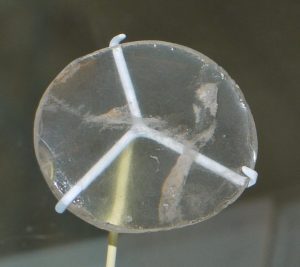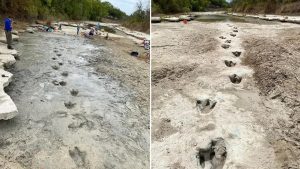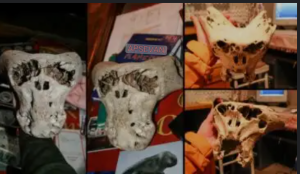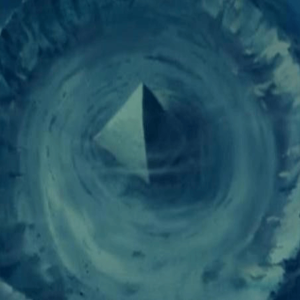Giant fish that fed on our ancestors is unearthed in South Africa


Researchers have uncovered 360-million-year-old fossils belonging to a newly described species of voracious fish that fed on tetrapods.
Researchers have recently discovered the fossilized remains of a gigantic fish that lived about 350 million years ago , during the Late Devonian period , on the supercontinent Gondwana (GESS, 2023) .
This fish, which measured up to 2.7 meters in length, is the largest bony fish ever recorded at this time, and was predatory, with sharp, ferocious teeth.

Hyneria udlezinye is shown together with the tetrapods Umzantsia amazana and Tutusius umlambo, the placoderms Groenlandaspis riniensis and Bothriolepis africana, the coelacanth Serenichthys kowiensis, the lungfish Isityumzi mlomomde and a cirtoctenid eurypterid.
Image : Maggie Newman in GESS, 2023 .
Named Hyneria udlezinye , which means “ one who consumes others ” in IsiXhosa , an indigenous language widely spoken in the region of South Africa where the bones were found, the fish had a short, torpedo-like face and mouth. it contained both rows of small teeth and pairs of large tusks that could reach 5 centimeters in the largest individuals.
Researchers uncovered the first hints of this ancient fish’s existence in 1995 , when they unearthed a series of isolated fossilized scales at an excavation site called Waterloo Farm , near Makhanda , South Africa.
Now, in a study published in the journal PLOS One , researchers have finally put together a skeleton of the newly found species of giant tristichopterid , a type of ancient bony fish.
According to Robert Gess , one of the study’s authors and a paleontologist and research associate at the Albany Museum and Rhodes University in South Africa, the skeleton reveals that H. udlezinye was a voracious predator.
“Flippers are mainly at the back of the body. This is an ecological trait of a predator waiting to strike; he can give a sudden boost. Hyneria would hide in the dark shadows and wait for something to pass,” said Gess.
This gigantic fish likely preyed on four-legged creatures known as tetrapods , the ancestral group that led to the human lineage.
“Tristhopterids evolved into monsters that most likely ate our ancestors,” said Per Ahlberg , study co-author and professor at the Department of Organism Biology at Uppsala University in Sweden.
In a previous study, another species of the same genus, H. lindae , was identified at an excavation site in Pennsylvania, which was part of the supercontinent Euramerica during the Late Devonian.
The Waterloo Farm fossils are the first to indicate that Hyneria lived in Gondwana.
The new study also reveals that giant tristichopterids lived not just in the tropical regions of Gondwana, but across the continent and even in the Arctic Circle.
Most tristichopterid fossils found to date have been excavated in Australia and North America, so the discovery of H. udlezinye fossils in South Africa is particularly significant.
This suggests that these ancient fish could have a wider distribution than previously thought, and that they may have inhabited a number of different environments, from tropical rivers to lakes in colder regions.
This discovery also adds to our understanding of the diversity of ancient bony fish, a group that is relatively poorly understood.
Tristichopterids are an extinct group of bony fish that lived during the Devonian period, between about 416 and 359 million years ago .
They were members of the subclass of lobe-finned fishes, which includes modern animals such as coelacanths and lungfishes.
Tristichopterids have been the subject of study for decades, but most known species so far have been relatively small, less than a meter long.
The discovery of H. udlezinye and other giant tristichopterid species such as H. lindae is providing paleontologists with a new perspective on these ancient fish and how they evolved.
They are also providing new information about the ancient ecosystems these animals lived in and how they related to other creatures of the time, including the first tetrapods.
Researchers now hope to find more giant tristichopterid fossils in other parts of the world, which could help build a more complete picture of these fascinating animals and their evolution over geological time.
Meanwhile, the discovery of H. udlezinye and its sharp teeth is a reminder of how different the natural world was hundreds of millions of years ago, and how life on Earth has constantly evolved throughout its history.




